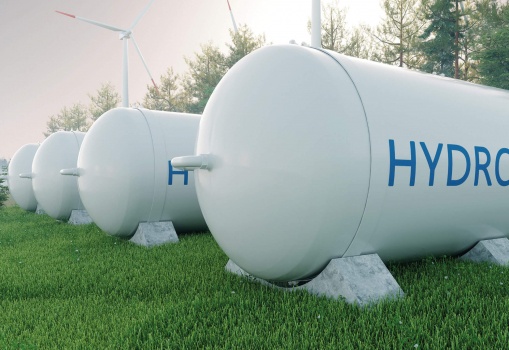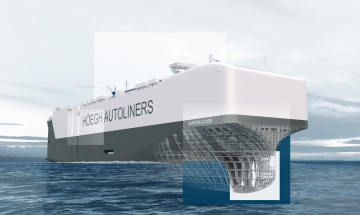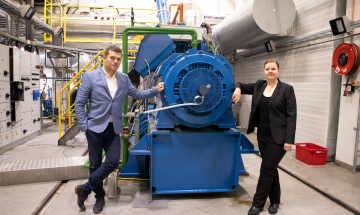
Elomatic: Is the hydrogen future here already?
The world is in urgent need of fossil–free energy in order to abate global warming. There is no single solution available and it is likely that different applications with different solutions will need to be employed. In energy production, the first steps have already for been taken: in the last decades, wind and solar production have become economically viable even without subsidies. The drawback of especially these two production methods is that production cannot be scaled up and down according to demand. The need for energy storage is thus increasing, and a complete solution for this has not yet been found.
Green hydrogen has the potential to be a partial solution for energy storage, and high expectations have been placed on the hydrogen economy. For the time being, however, solutions on extensive energy storage for grid balancing (Ex Seasonal) with hydrogen are expensive and likely to be so for some time. The same applies to a large extent to other P2X (Power-to-X) solutions. The issue with hydrogen is that even though the energy content per kilogram is very large, the density is low even when pressurised to 350-700bar or when liquified, leading to costly energy storage.
There is a vast amount of mobile applications (cars, trucks, busses, ferries, and industrial machines such as dumpers, excavators, etc.) in need of oil-based diesel replacement. They require a smaller amount of energy storage compared to grid balancing, and there is added value in storing energy in a moving application.
Key energy storage role for batteries — growth expected in hydrogen-based solutions
Batteries have already entered the market and the scale-up for cars, local distribution trucks, and even short-distance ferries have entered the market. Battery-based solutions will continue to grow rapidly but will not be the most viable solution for all applications. Bio-oil and biogas (methane) will have a share of the market.
In applications with slightly higher energy demand, such as medium-distance small-size ferries, trucks, and even airplanes, hydrogen-based solutions are expected to grow. The first steps are here; practically all major truck manufacturers (Ex. Volvo, MAN, Toyota, Scania, Daimler, Hyundai, etc.) have released timelines for fuel cell hydrogen operated trucks, and the first ones are already in operation. The first hydrogen ferries for public use are on the way in Norway and California, for example, while the first demonstration flights with hydrogen have also been performed.
High expectations have been placed on the hydrogen economy.
Market entry hampered by the need to scale up both demand and supply
The difficulty of entering a market where both production and consumption need to be scaled up needs to be addressed. It is impossible to identify a business case to produce hydrogen without consumers, who, on the other hand, are not tempted to use hydrogen unless it produced. It is, therefore, crucial to identify business cases where both production and consumption can be agreed upon for more extended periods in the start-up phase. In the long term, business cases will become more diverse, but this will initially not be viable.
Heavy subsidisation can naturally support the production and distribution of hydrogen without fuel supply agreements (FSA). Germany, South Korea, and Japan are on a trajectory to make hydrogen available for the public. In Germany, there is already a good network of refuelling stations for passenger cars, which can be found on the Internet at h2.live. This can, however, be a costly method, especially in less densely populated areas. It may be of interest to search for solutions where the production investment is linked with FSAs, for instance, for ferries or a fleet of trucks. For such applications, the production can be somewhat oversized to accommodate the sale of green hydrogen on the free market, thereby achieving a stable basis for the business.
None of this will happen, however, with pure current business cases: the technology is still too expensive. There is significant interest in supporting these efforts, and the EU, for example, has substantial funding in place for hydrogen. (See chapter below) Individual countries still must create their own paths. It could be said that the time for only planning has already passed; action is needed for the first pilots to achieve the set targets.
Reliance on batteries will not be enough. Now is the time for the implementation of hydrogen projects. Equipment suppliers of hydrolysers have already noted a rapid increase in demand in 2020. The start of the hydrogen economy is thus here as, without it, global warming targets are unlikely to be met. The only question now is when each country will adopt it. Some states have already started to lead the way in implementing hydrogen in the pursuit of decarbonisation.
A hydrogen strategy for a climate-neutral Europe
In an integrated energy system, hydrogen can support the decarbonisation of industry, transport, power generation and buildings across Europe…
This gradual transition will require a phased approach:
- From 2020 to 2024, we will support the installation of at least 6 gigawatts of renewable hydrogen electrolysers in the EU, and the production of up to one million tonnes of renewable hydrogen.
- From 2025 to 2030, hydrogen needs to become an intrinsic part of our integrated energy system, with at least 40 gigawatts of renewable hydrogen electrolysers and the production of up to ten million tonnes of renewable hydrogen in the EU.
- From 2030 to 2050, renewable hydrogen technologies should reach maturity and be deployed at large scale across all hard-to-decarbonise sectors.
(Extract from EU Communication COM/2020/301, publication 8.7.2020)
Author Ted Bergman
M.Sc. (Chem. Eng)
Ted Bergman joined Elomatic in 2019 as Vice-President with a focus on developing international business. His professional experience dates back to 1995 and covers sales, design and commissioning tasks in e.g. the power industry, pulp & paper industry, and process industry.





